Marsception competition winners propose architectural habitats on the Red Planet
By Nathaniel Bahadursingh|
Tuesday, Aug 6, 2024

Related
The second edition of the Marsception Architecture Competition just published its winning entries, exploring the potential of Mars being a future habitat for humankind. The brief tasked participants to design concepts for a self-sustaining living space for a group of five researchers on the Red Planet.
Proposals needed to feature a functional and sustainable space located anywhere on Mars that meets the needs of the researchers. Spaces mandated in the program included a living area, sleeping area, cooking area, research area, interaction spaces, sanitation and bath spaces, recreation area, controlled areas for farming, and any other additional spaces that participants wanted to include.
Entries from over 32 countries were submitted to this year's contest, resulting in three winners and 10 Honorable Mentions.
First Place: Thresholds by Alec Naktin and Natalie Perri (United States)

Project excerpt: "The Martian environment poses numerous challenges to habitation. Shelters designed on its surface must provide oxygen and warmth, block solar radiation, and source sufficient building material. Conversely, shelters created below Mars surface damage inhabitants psychological health by sealing them in confined, dark spaces. Our proposal utilizes novel building techniques developed by researchers at the University of Pennsylvania to draw upon both solutions best qualities. Situated within a lava tube northeast of the volcano Ascraeus Mons, THRESHOLDS sits half in and half out of the Martian Landscape, partially exposed to the outside world through the side of the lava tube’s wall. The volcano’s softer basaltic regolith can be easily excavated and reused to form a structure at the cliff face that maintains outside views while shielding solar radiation."
Second Place: A Martian Eclipse by Park Seo-an and Ju Yeon Hong (South Korea)
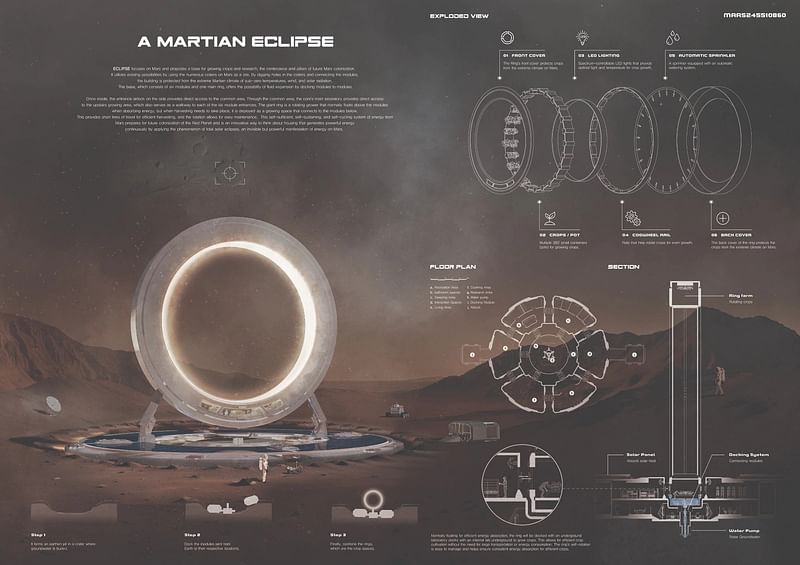
Project excerpt: "ECLIPSE focuses on Mars and proposes a base for growing crops and research, the centerpiece and pillars of future Mars colonization. It utilizes existing possibilities by using the numerous craters on Mars as a site. By digging holes in the craters and connecting the modules, the building is protected from the extreme Martian climate of sub-zero temperatures, wind, and solar radiation. The base, which consists of six modules and one main ring, offers the possibility of fluid expansion by docking modules to modules. Once inside, the entrance airlock on the side provides direct access to the common area. Through the common area, the core’s main laboratory provides direct access to the upstairs growing area, which also serves as a walkway to each of the six module entrances. The giant ring is a rotating grower that normally floats above the modules when absorbing energy, but when harvesting need to take place, it is deployed as a growing space that connects to the modules below. This provides short lines of travel for efficient harvesting, and the rotation allows for easy maintenance. This self-sufficient, self-sustaining and self-cycling system of energy from Mars prepares for future colonization of the Red Planet and is an innovative way to think about housing that generates powerful energy continuously by applying the phenomenon of total solar eclipses, an invisible but powerful manifestation of energy on Mars."
Third Place: Celestial Genesis by Alp Arda (Italy)
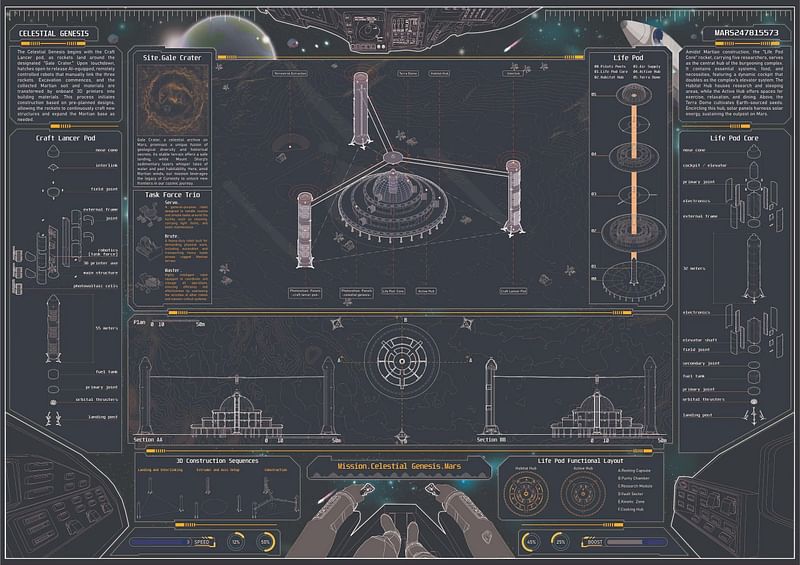
Project excerpt: "The Celestial Genesis begins with the Craft Lancer pod, as rockets land around the designated 'Gale Crater.' Upon touchdown, hatches open to release AI-equipped, remotely controlled robots that manually link the three rockets. Excavation commences, and the collected Martian soil and materials are transformed by onboard 3D printers initiate construction based on pre-planned designs, allowing the rockets to continuously craft new structures and expand the Martian base as needed. Amidst Martian construction, the 'Life Pod Core' rocket, carrying five researchers, serves as the central hub of the burgeoning complex. It contains essential systems, food, and necessities, featuring a dynamic cockpit that doubles as the complex’s elevator system. The Habitat Hub houses research and sleeping areas, while the Active Hub offers spaces for exercise, relaxation, and dining. Above, the Terra Dome cultivates Earth-sourced seeds. Encircling this hub, solar panels harness solar energy, sustaining the outpost on Mars."
Honorable Mention 1: Ever - Grow by Goh Zheng Rong and Loy Xin Yi (Malaysia)

Honorable Mention 2: Nomadic Incubator by Jiaqi Kang, Jiamin Huang and Lejia Li (United States)
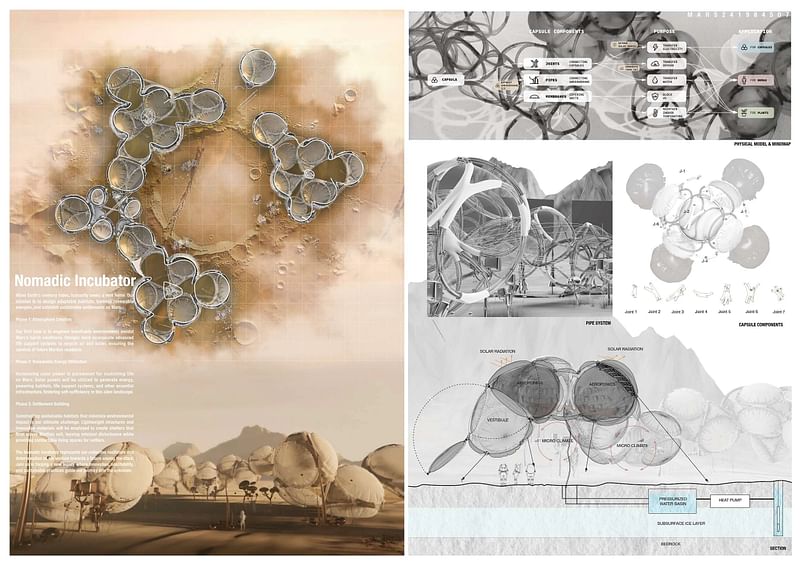
Honorable Mention 3: Osmosis by Wan Zilin and Ren Yinghui (China)
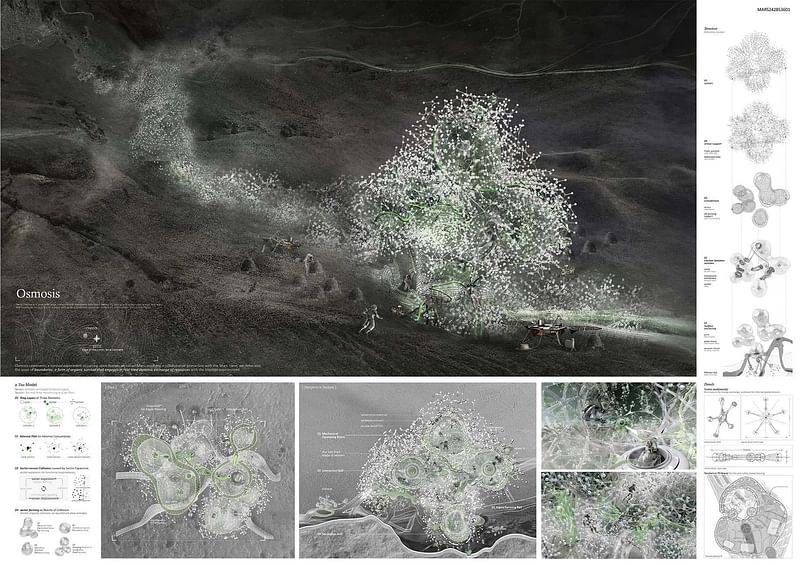
Honorable Mention 4: Nomadica: The Mobile Haven on Mars by Xueyan Wang and Jiahao Du (Australia)
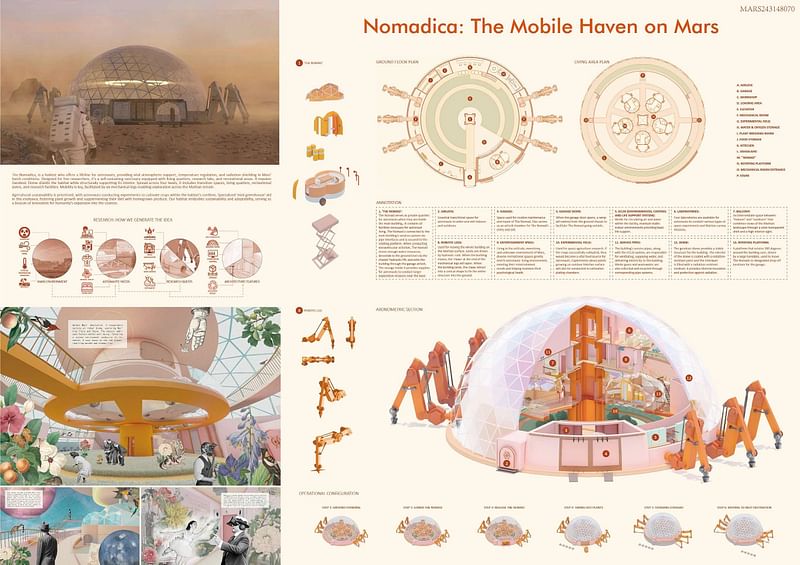
Honorable Mention 5: EDE – NO 1 by Jeffery Moisant, Ian Simon and Simon Chiquito (United States)
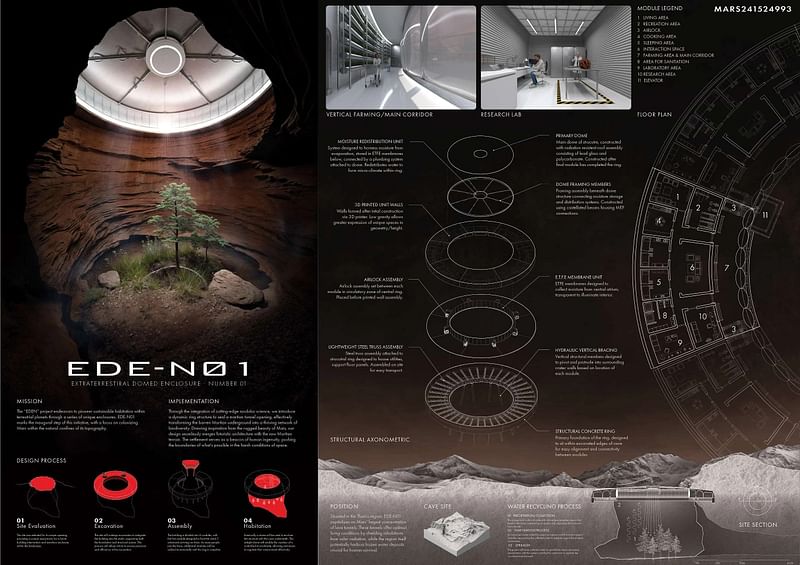
Honorable Mention 6: Aeon by Kush Nitesh Bhansali, Aryan Samudre and Mohit Prakash Ingle (India)
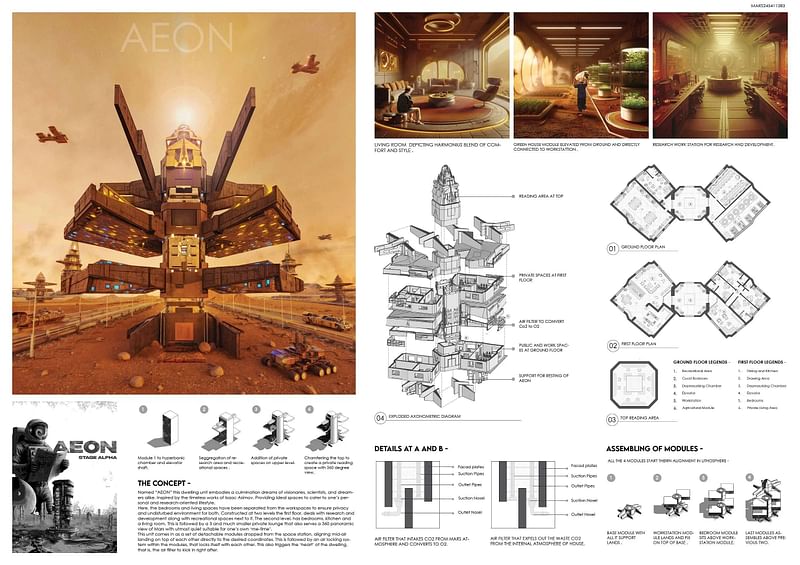
Honorable Mention 7: Muzhi Wang and Ruoxuan Hu (United States)

Honorable Mention 8: Inception______ by Mayur Mehta (India)

Honorable Mention 9: Interlock by Sylvana Kam, Jayden Chan and Moxiao Guo (Canada)
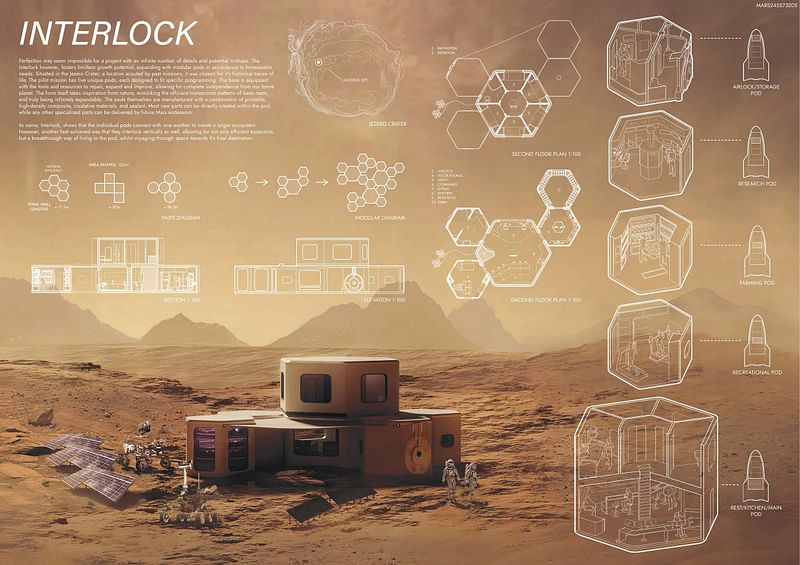
Honorable Mention 10: Circle of Life by Lorenzo Bavelloni (Italy)

RELATED COMPETITION Call For Ideas: Marsception 2024 Architecture Competition

RELATED NEWS Volume Zero announces winners of the 2018 Marsception Competition


Share
1 Comment
Chad Miller · Aug 06, 24 10:15 PM
I like all the windows. Too bad Mars has no global magnetic field and a thin atmosphere. Without around 4.5 feet of soil any life would die from radiation in a few months.
Neat renderings though.
Comment as :